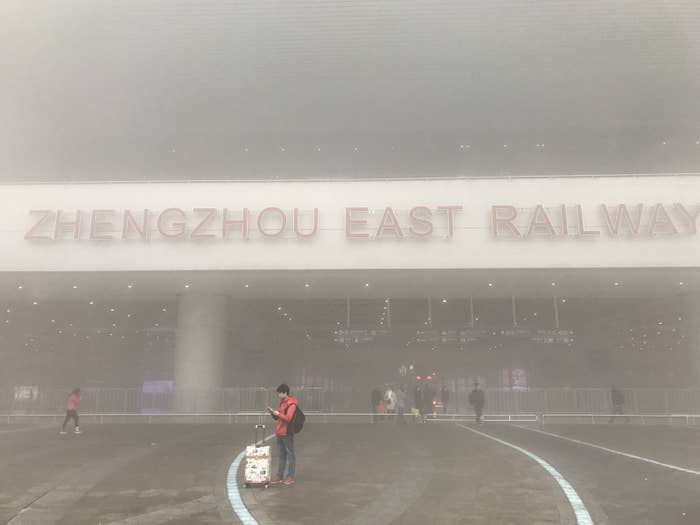
Some smog over parts of the western United States originated as air pollution in Asia that then floated across the Pacific Ocean, according to a new scientific study.
"In the US, there's been a lot of emissions control measures to try to reduce ozone pollution," physical scientist Larry Horowitz, one of the report's authors, told BuzzFeed News. "Those are at least in part successful, but other factors are contributing to elevated ozone despite those emissions reductions, one of which is the transport of ozone across the Pacific to the US."
Despite the US reducing the emission of nitrogen oxides into the air by 50%, Asian countries have tripled their output since 1990, according to the report published Wednesday in the Atmospheric Chemistry and Physics journal. The nitrogen oxides are then broken down by sunlight and turn into ozone, the key component of smog, which eventually finds it way to the US. That then accounts for up to 65% of the increase in western US smog levels (0.3–0.5 parts per billion per year), according to the scientists.
"We conclude that the increase in Asian anthropogenic emissions is the major driver of rising background [ozone] over the western United States for both spring and summer in the past decades," wrote the team of scientists, which was lead by Meiyun Lin of the National Oceanic and Atmospheric Administration (NOAA) at Princeton University.
The smog was particularly strong in the spring, when winds and weather helped pushed the pollutants across the ocean. But ozone levels were still higher than expected in the summer months.
"The wings are stronger [in the spring] and in a direction to transport pollution from west to east across the Pacific during that time, and also the chemistry is somewhat slower acting than in the summer," said Horowitz, head of the atmospheric chemistry and climate group at the NOAA's Geophysical Fluid Dynamics Laboratory at Princeton.

The major Asian nations responsible for the influx of ozone are China, India, Japan, and North and South Korea.
The ground-level ozone measurements were taken at 70 rural sites in the western US, including the Yellowstone and Rocky Mountain national parks.
"Twenty years ago, scientists first speculated that rising Asian emissions would one day offset some of the United States' domestic ozone reductions," Owen Cooper of the University of Colorado and the NOAA Earth System Research Laboratory told Princeton University. "This study takes advantage of more than 25 years of observations and detailed model hindcasts to comprehensively demonstrate that these early predictions were right."
The study's scientists said their study underscored the importance of tackling air pollution within a global framework.
"Our study...is showing that it is one atmosphere and we can't treat our environment entirely separately from the global environment," Horowitz said.
But he also stressed the importance of taking domestic action against air pollution.
"If we hadn't reduced our emissions during this period we'd have even more ozone," he said. "I think it's still up to us to reduce our own emissions. You could argue we'd have to take even more reductive actions to achieve the goals we had in mind."
